What Happened To The Pythagorean Brotherhood?
Conny Waters - AncientPages.com - Established around 500 B.C. in Crotone, Italy, the Pythagorean Brotherhood was one of the earliest secret societies. Crotone was a flourishing Greek colony and a center for intellectuals who exchanged ideas and theories.
After escaping Samos's tyrannical rule, the great Greek philosopher Pythagoras migrated to Southern Italy and founded the Pythagorean School of Mathematics in Crotone.
Pythagoreans celebrate the sunrise (1869) by Fyodor Bronnikov. Credit: Public Domain
Pythagoras of Samos (c. 570 - c. 495 BC) was one of the greatest minds at the time, but he was a controversial philosopher whose ideas were unusual in many ways. Being a truth-seeker, Pythagoras traveled to foreign lands. It is presumed he received most of his education in ancient Egypt, the Neo-Babylonian Empire, the Achaemenid Empire, and Crete.
Pythagoras Of Samos Created The Pythagorean Brotherhood
Once he established his academy in the Italian city, he was soon surrounded by many followers who wanted to acquire some of his knowledge. Pythagoras was a remarkable person who transformed the ancient world and still inspires the realms of science, mathematics, philosophy, and the arts.
Besides being a brilliant mathematician, Pythagoras was also a mystic. Once he founded the Pythagorean Brotherhood, the central teachings revolved around mathematics, strict vegetarianism, reincarnation, and the cults of Apollo and the Muses, ancient patron goddesses of poetry and culture.
"Most vegetarians consume beans, but Pythagoras told his followers they mustn't eat or even touch beans!
The reason behind this is not entirely known, but there are certain theories that can provide some light on the great philosopher's reluctance to beans.
Pythagoras believed that a person should strive for tranquility and peace. Beans were associated with metempsychosis, a philosophical term in the Greek language referring to the transmigration of the soul, especially its reincarnation after death. Pythagoreans believed that beans had the potential for life because they looked like human genitalia or fetuses." 1
The Pythagorean Brotherhood was a cult, not unlike modern cults. Initiated members had had to swear an oath on a sacred triangle known as the tetractys, sign over all their worldly possessions to the group and take a vow of secrecy. Both men and women were allowed to join the Brotherhood.
Knowledge of the Brotherhood must not be revealed to outsiders, and members must live by a set of strict rules. The Pythagorean Brotherhood served as a prototype to many secret societies established in the years to come.
The beliefs that Pythagoras held were:
- that at its deepest level, the reality is mathematical in nature,
- that philosophy can be used for spiritual purification,
- that the soul can rise to union with the divine,
- that certain symbols have a mystical significance, and
- that all brothers of the order should observe strict loyalty and secrecy. 2
The Vision Of Pythagoras And Mysterious Death Of One Of His Followers
"Twentieth-century physics began around 600 B.C. when Pythagoras of Samos proclaimed an awesome vision. By studying the notes sounded by plucked strings, Pythagoras discovered that the human perception of harmony is connected to numerical ratios. He examined strings made of the same material, having the same thickness, and under the same tension, but of different lengths.
In Raphael's fresco The School of Athens, Pythagoras is shown writing in a book as a young man presents him with a tablet showing a diagrammatic representation of a lyre above a drawing of the sacred tetractys. Credit: Public Domain
Under these conditions, he found that the notes sound harmonious precisely when the ratio of the lengths of string can be expressed in small whole numbers. For example, the length ratio2:1 sounds a musical octave, 3:2 musical fifth, and 4:3 a musical fourth.
The vision inspired by this discovery is summed up in the maxim "All Things are Number." This became the credo of the Pythagorean Brotherhood.
The Brotherhood was responsible for many fine discoveries, all of which it attributed to Pythagoras. Perhaps the most celebrated is the Pythagorean Theorem. This theorem remains a staple of introductory geometry courses. It is also the point of departure for the Riemann-Einstein theories of curved space and gravity.
Unfortunately, this very theorem undermined the Brotherhood's credo. Using the Pythagorean Theorem, it is not hard to prove that the ratio of the hypotenuse of an isosceles right triangle to either of its two shorter sides cannot be expressed in whole numbers. A member of the Brotherhood who revealed this dreadful secret drowned shortly." 3
Did the Pythagorean Brotherhood murder him?
What Happened To Pythagoras And The Pythagorean Brotherhood?
Many of Pythagoras' followers came from wealthy aristocratic families, and he himself was in charge of education in the city of Crotone. Unfortunately, the Pythagorean Brotherhood was not limited to scientific studies, and that ended its glory days. Once the Pythagorean Brotherhood became powerful and politically influential, it became involved in clashes between local parties.
In 508 B.C., Pythagorean Brotherhood became a target of attacks by Cylon of Croton.
It is not entirely clear why Cylon of Croton led a revolt against the Pythagoreans.
According to Iamblichus, a Neoplatonist philosopher and biographer of Pythagoras Cylon were disappointed and furious he had not been accepted as a Pythagorean Brotherhood member.
Illustration from 1913 showing Pythagoras teaching a class of women. Many prominent members of his school were women[. Credit: Public Domain
"Cylon was a leading citizen of Croton with all the advantages of noble birth, fame, and riches, but otherwise he was a difficult, violent, and tyrannical man who eagerly desired to participate in the Pythagorean way of life. He approached Pythagoras but was rejected because of his character defects. Unaccustomed to rejection, Cylon vowed to seek revenge and destroy Pythagoras and his followers. In this way, he activated a powerful political campaign of aggressive zeal against the Pythagoreans. It was because of this that Pythagoras left for Metapontium and there is said to have ended his days", Iamblichus wrote in his book, The Life of Pythagoras. 4
Whether this was the actual reason behind Cylon's hatred toward the Pythagoreans remains unknown. Something prompted him to attack the Pythagorean Brotherhood's headquarters, and the building was burned to the ground. Few cult members survived and escaped. Pythagoras managed to escape the wrath of Cylon of Croton and took refuge in Metapontum, where he died. Pythagoras' followers Lysis of Tarentum and Philolaus fled to Greece and formed small Pythagorean circles in Thebes and Phlious.
The Pythagorean philosophy and religious beliefs survived through small communities that continued spreading his teachings and the great philosopher Plato, who admired Pythagoras.
The Pythagorean Brotherhood ceased to exist, but the legacy of Pythagoras is still alive.
Written by Conny Waters – AncientPages.com Staff Writer
Updated on November 5, 2023
Copyright © AncientPages.com All rights reserved. This material may not be published, broadcast, rewritten or redistributed in whole or part without the express written permission of AncientPages.com
Expand for references- Conny Waters - Why Didn't Pythagoras And His Followers Eat Beans? AncientPages.com
- J J O'Connor and E F Robertson - Pythagoras of Samos, School of Mathematics and Statistics
- University of St Andrews, Scotland
- Thomas Taylor - Iamblichus' Life of Pythagoras
- Wilczek, Frank. "On the World's Numerical Recipe." Daedalus131, no. 1 (2002): 142-47.
More From Ancient Pages
-
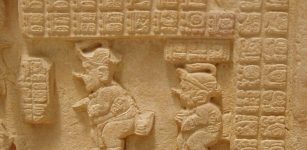 Alux: Little Mythical Troublemaker And Guardian Of Corn Fields In Mayan Folklore
Featured Stories | Jun 11, 2019
Alux: Little Mythical Troublemaker And Guardian Of Corn Fields In Mayan Folklore
Featured Stories | Jun 11, 2019 -
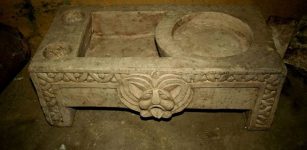 Roman-Era Residence Unearthed In Ancient Capital Of Memphis, Egypt
Archaeology | Sep 27, 2018
Roman-Era Residence Unearthed In Ancient Capital Of Memphis, Egypt
Archaeology | Sep 27, 2018 -
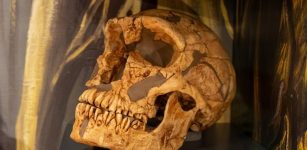 Why Is La Ferrassie Man A Unique And Famous Neanderthal?
Featured Stories | Oct 30, 2023
Why Is La Ferrassie Man A Unique And Famous Neanderthal?
Featured Stories | Oct 30, 2023 -
 Roman Tombs Unearthed In Egypt’s Dakhla Oasis
Archaeology | Jan 28, 2019
Roman Tombs Unearthed In Egypt’s Dakhla Oasis
Archaeology | Jan 28, 2019 -
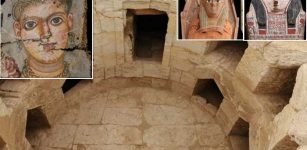 Huge Ptolemaic/Roman Funerary Structure Unearthed In Egypt’s Fayoum
Archaeology | Dec 6, 2022
Huge Ptolemaic/Roman Funerary Structure Unearthed In Egypt’s Fayoum
Archaeology | Dec 6, 2022 -
 LIDAR Advanced Technology Spotted Rare Pre-Columbian Florida Village – Highly-Prized Producer Of Beads
Archaeology | Nov 10, 2019
LIDAR Advanced Technology Spotted Rare Pre-Columbian Florida Village – Highly-Prized Producer Of Beads
Archaeology | Nov 10, 2019 -
 Incredible Technology In Mysterious Huashan Caves, China
Civilizations | Feb 10, 2015
Incredible Technology In Mysterious Huashan Caves, China
Civilizations | Feb 10, 2015 -
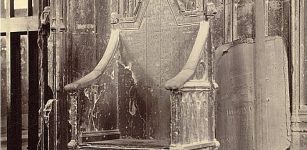 Stone Of Scone: Mysterious Stone Of Destiny Has Turbulent Ancient History
Artifacts | Mar 19, 2016
Stone Of Scone: Mysterious Stone Of Destiny Has Turbulent Ancient History
Artifacts | Mar 19, 2016 -
 Graves Of Celtic Princes Reveal How Powerful Women Were In Pre-Roman Germany
Archaeology | Jun 4, 2024
Graves Of Celtic Princes Reveal How Powerful Women Were In Pre-Roman Germany
Archaeology | Jun 4, 2024 -
 Tiresias – Unusual Prophet Who Turned Into A Woman For Seven Years
Featured Stories | May 16, 2020
Tiresias – Unusual Prophet Who Turned Into A Woman For Seven Years
Featured Stories | May 16, 2020 -
 Mystery Of Ancient Sarcophagi In Egypt
Ancient Mysteries | Aug 26, 2015
Mystery Of Ancient Sarcophagi In Egypt
Ancient Mysteries | Aug 26, 2015 -
 Future Of Thornborough Henges Secured – Stonehenge Of The North Preserved For The Nation
News | Feb 3, 2023
Future Of Thornborough Henges Secured – Stonehenge Of The North Preserved For The Nation
News | Feb 3, 2023 -
 Unknown Fragments Of Two Euripides Tragedies Found In Egyptian Grave
Scripts, Paintings & Inscriptions | Sep 9, 2024
Unknown Fragments Of Two Euripides Tragedies Found In Egyptian Grave
Scripts, Paintings & Inscriptions | Sep 9, 2024 -
 Mystery Of The Cave Where People Vanish Or Become Disoriented
Featured Stories | Jan 2, 2024
Mystery Of The Cave Where People Vanish Or Become Disoriented
Featured Stories | Jan 2, 2024 -
 DNA Reveals Neanderthals’ Own Blood May Have Led to Their Demise, Scientists Say
Evolution | Jan 27, 2025
DNA Reveals Neanderthals’ Own Blood May Have Led to Their Demise, Scientists Say
Evolution | Jan 27, 2025 -
 Mysterious 2,800-Year-Old Channel Installation Discovered In The City Of David, Jerusalem
Archaeology | Aug 30, 2023
Mysterious 2,800-Year-Old Channel Installation Discovered In The City Of David, Jerusalem
Archaeology | Aug 30, 2023 -
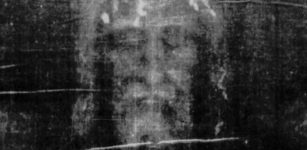 Unknown Energy Source Created The Image On The Shroud Of Turin Scientists Suggest
Archaeology | May 12, 2012
Unknown Energy Source Created The Image On The Shroud Of Turin Scientists Suggest
Archaeology | May 12, 2012 -
 Cro-Magnon Man Invented First Indoor Lighting – An Unusual But Effective Oil Lamp
Ancient History Facts | Jan 22, 2019
Cro-Magnon Man Invented First Indoor Lighting – An Unusual But Effective Oil Lamp
Ancient History Facts | Jan 22, 2019 -
 The Legend Of Little Deer—Interesting Cherokee Tale Of How Disease And Medicine Began, And Why The Native Americans Respect All Life
Featured Stories | May 10, 2017
The Legend Of Little Deer—Interesting Cherokee Tale Of How Disease And Medicine Began, And Why The Native Americans Respect All Life
Featured Stories | May 10, 2017 -
 Historical Enigma Of The Ancient Werewolf Ruler – What Powers Did He Possess?
Ancient Mysteries | Jan 9, 2025
Historical Enigma Of The Ancient Werewolf Ruler – What Powers Did He Possess?
Ancient Mysteries | Jan 9, 2025



